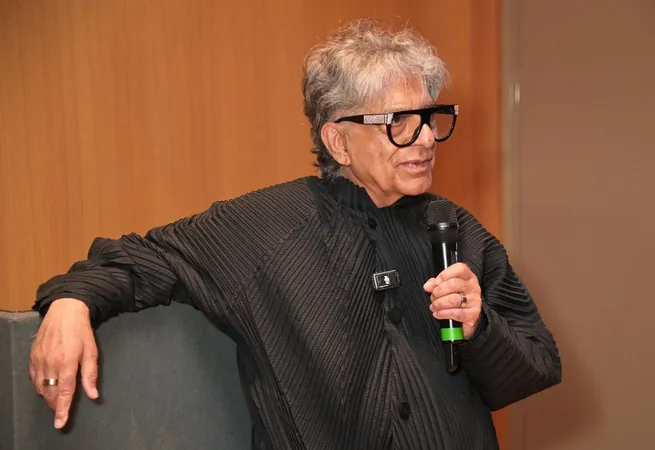
Unveiling Neanderthals' Hidden Superhighways: A 2,000-Mile Journey Through Rivers and Ice
2025-06-10
Author: Jacob
Neanderthals' Surprising Speed of Migration
In a groundbreaking study, anthropologists have uncovered that Neanderthals traversed northern Eurasia much faster than previously believed. By utilizing advanced computer simulations, they mapped potential pathways of these ancient humans, revealing that they likely relied on river valleys as natural highways. This research suggests that Neanderthals could have traveled approximately 2,000 miles (3,250 km) in less than 2,000 years during warmer periods.
The Insights Behind the Study
Emily Coco, the lead researcher who began her journey as a doctoral student at New York University, elaborated on their findings. "Despite facing geographical challenges like mountains and large rivers, our research indicates that Neanderthals had the ability to navigate northern Eurasia surprisingly quickly," she stated. The study was co-authored by Radu Iovita, an expert at NYU's Center for the Study of Human Origins, and was published in the esteemed journal, PLOS One.
How They Did It: The Simulation Process
Coco and Iovita's innovative approach involved reconstructing ancient terrains, including river systems and glacial barriers, as well as factoring in temperature variations to simulate Neanderthal movement strategies. This method parallels techniques used to study modern human and animal migrations but was a fresh application for Neanderthal research.
Key Historical Periods of Migration
Their analysis pinpointed two specific ancient periods ripe for migration: Marine Isotope Stage 5e (starting about 125,000 years ago) and Marine Isotope Stage 3 (beginning around 60,000 years ago). Warmer temperatures during these times likely made travel easier for Neanderthals. The simulations, run on the powerful NYU Greene Supercomputer Cluster, indicated that they could have reached the Siberian Altai Mountains in either period using various routes while following a consistent northern path through the Ural Mountains and southern Siberia.
Connecting with Other Ancient Humans
These migration corridors also illuminate Neanderthal interactions with other ancient hominids, particularly Denisovans. There's compelling evidence suggesting that as Neanderthals traveled, they ventured into areas already occupied by Denisovans—a context that aligns with findings of interbreeding between the two species.
A Conclusive Outcome of Landscape and Climate
Radu Iovita remarked, "Neanderthals could have migrated thousands of kilometers, from the Caucasus Mountains to Siberia, in just 2,000 years by tracing river corridors. Although some have speculated about the feasibility of rapid, long-distance migrations based on genetic studies, archaeological evidence has been lacking. Our detailed computer simulations provide robust support for the idea that such migrations were almost inevitable during warmer climatic periods."









 Brasil (PT)
Brasil (PT)
 Canada (EN)
Canada (EN)
 Chile (ES)
Chile (ES)
 Česko (CS)
Česko (CS)
 대한민국 (KO)
대한민국 (KO)
 España (ES)
España (ES)
 France (FR)
France (FR)
 Hong Kong (EN)
Hong Kong (EN)
 Italia (IT)
Italia (IT)
 日本 (JA)
日本 (JA)
 Magyarország (HU)
Magyarország (HU)
 Norge (NO)
Norge (NO)
 Polska (PL)
Polska (PL)
 Schweiz (DE)
Schweiz (DE)
 Singapore (EN)
Singapore (EN)
 Sverige (SV)
Sverige (SV)
 Suomi (FI)
Suomi (FI)
 Türkiye (TR)
Türkiye (TR)
 الإمارات العربية المتحدة (AR)
الإمارات العربية المتحدة (AR)